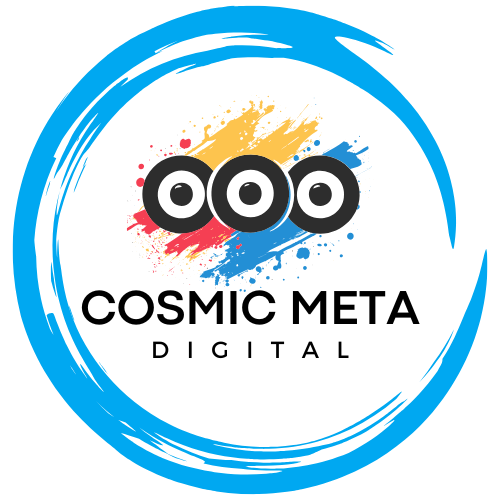Unlocking This Year’s Developer Landscape
The 2025 Developer Survey gathered responses from over 49,000 programmers spanning 177 countries, providing an unrivaled look at the evolving world of software development. Most importantly, the findings reflect a landscape transformed by artificial intelligence, shifting workplace priorities, and passionate debates about tool selection. What are developers really experiencing—and what does it mean for the future of tech?
Because the survey covers a multitude of regions and cultures, it offers insights that resonate across global tech communities. Developers are adapting to rapid technological progress while balancing traditional methodologies with emerging innovations. Therefore, understanding these dynamics becomes essential for tech leaders and enthusiasts alike.
Besides that, the survey reveals that the modern developer’s journey is not solely about coding but also about continuous learning and community collaboration. These insights provide a robust framework for organizations aiming to build future-proof development environments.
The Rise—and Skepticism—of AI Tools
One trend overshadows all else in 2025: the deep integration of AI within development workflows. According to survey data, an impressive 84% of developers now use or expect to use AI-driven tools, a remarkable increase from 76% the previous year. This widespread adoption highlights how AI has become a near-essential coding companion, particularly for tasks like code completion, debugging, and problem-solving.
Most importantly, the survey emphasizes that while AI aids in routine tasks, the human element remains critical. Because only 3% of developers report ‘high trust’ in AI outputs, there is a growing necessity for rigorous verification processes. Furthermore, nearly half (46%) of developers express significant reservations about relying solely on AI-generated results, demonstrating a clear preference for combining machine efficiency with human oversight.
Moreover, this skepticism opens a dialogue about the risks of over-dependence on AI. Therefore, tech companies and tool developers are challenged to enhance reliability and transparency in AI functionalities, as detailed in articles like those on ShiftMag and the Stack Overflow Blog. This balance of enthusiasm and caution points to a future where AI continues to evolve alongside human insight.
How Developers Learn: The Changing Playbook
Besides the evolving tool landscape, learning methodologies in development are also shifting because of AI’s proliferation. For 44% of developers, AI tools have become a pivotal resource for mastering coding concepts—a noticeable rise from 37% last year. Most importantly, these tools offer instant feedback and solution suggestions, accelerating the learning process considerably.
Because traditional learning channels such as technical documentation, community forums, and mentorship remain invaluable, developers blend old and new methods to reinforce their skills. This strategic combination ensures that AI supplements rather than replaces foundational learning resources, as noted in insights from the Stack Overflow 2025 Developer Survey.
Furthermore, many professionals emphasize that integrating AI into their learning routine fosters a more interactive and engaging way to tackle complex coding challenges. Therefore, the modern learning playbook is being rewritten to merge automated assistance with classical knowledge transfer techniques.
Top Technologies: Usage, Love, and Frustrations
In a display of rapid technological evolution, the survey’s breakdown of platforms and languages shows change fueled by innovation and practicality. Microsoft Teams remains the most used collaboration tool, closely followed by Slack, which emphasizes how digital communication has become central to remote and hybrid work environments. Most importantly, these tools are enabling more fluid and integrated teamwork across progressive organizations.
Because of the surge in AI-assisted coding, platforms like GitHub Copilot have seen usage soar exponentially, outpacing traditional coding aids. In fact, developers now rely on AI not only for routine tasks but also for novel problem solving and prototyping. This dramatic change captures the industry’s reliance on tools that promise efficiency and accuracy.
Furthermore, programming languages such as Rust continue to win developer hearts because of their reliability and performance. Conversely, legacy frameworks like AngularJS and platforms like XCode are facing growing frustration, prompting developers to seek alternatives that better align with current demands. This nuanced landscape illustrates that while some technologies are celebrated for simplicity—such as htmx—others struggle under modern expectations.
Beyond the Code: Developer Satisfaction at Work
While technological tools and programming languages capture headlines, the survey also sheds light on deeper workforce sentiments. Almost half of the respondents indicate that they are not actively seeking new job opportunities, hinting at a sense of stability amid change. However, job satisfaction remains complex. A concerning 75% of working developers describe themselves as ‘complacent’ or ‘not happy at work,’ highlighting a need for renewed focus on workplace culture.
Most importantly, intrinsic motivators such as autonomy, trust, and competitive compensation emerge as central to job satisfaction. Because developers crave environments where they can solve genuine problems without bureaucratic constraints, companies must evolve to nurture creativity and practical innovation. As organizations strive for improvement, popular articles such as those on Nitor offer valuable strategies for enhancing work practices.
Besides that, the survey shows a subtle, positive shift in overall happiness compared to last year, suggesting that small changes in workplace practices can have an outsized impact. Therefore, addressing these core issues could lead to a more engaged and productive tech workforce in the years ahead.
Interpreting the Numbers: What’s Next?
Most notably, the surge in AI tool usage signals not only an acceleration in innovation but also the need for reliability and transparency. Because developers are increasingly cautious about blindly trusting output, there is a clear opportunity for further refinement of these technologies. Emphasizing real-world utility over mere hype is essential for future success.
Additionally, as tools like Rust and htmx continue to garner admiration for quality and simplicity, organizations are encouraged to invest in technologies they trust. Therefore, future developments should strive to marry the convenience of AI with the rigorous standards that developers demand. This perspective is supported by trend reports on platforms like the Pragmatic Engineer Survey 2025, which offers a forward-looking view of the tech stack that is shaping the industry.
Moreover, the numbers advocate for a balanced approach where innovation is tempered by careful oversight. In practical terms, this means developing tools that serve as effective co-pilots rather than untested substitutes for human decision-making. Most importantly, sustained developer empowerment hinges on a commitment to authenticity and utility in every tool adopted.
Key Takeaways for Tech Leaders
- AI is everywhere, but trust and verification are essential. The rapid integration of AI serves as both a boon and a challenge.
- Developer satisfaction is driven by fundamental human factors, not hype. Autonomy and competitive pay remain significant motivators.
- Tools with a strong reputation and robust APIs see the highest adoption. Genuine utility and reliability matter most.
- Languages and frameworks with proven reliability (like Rust) continue to win hearts. Their consistent performance fosters long-term trust.
- There’s a growing appetite for simplicity in web technology (witness the rise of htmx). Minimalist designs resonate with today’s developers.
Ultimately, the 2025 Developer Survey provides a clear signal: technology must operate at the intersection of innovation, trustworthiness, and genuine developer empowerment. With the insights provided, tech leaders can better navigate the evolving landscape and prepare for both the opportunities and challenges ahead.
Looking Forward
Most importantly, this report acts as a roadmap for future advancements in technology. Because developers are at the forefront of these changes, their feedback is crucial for continuous improvement. Forward-thinking companies will adapt their strategies to foster a more engaging and productive ecosystem.
Moreover, leveraging insights from respected sources like the Stack Overflow 2025 Developer Survey and Nitor’s Developer Survey Report can help organizations build stronger, more resilient tech communities. Therefore, the future of tech is not just about adopting new trends but also about cultivating an environment where developers feel empowered and valued.



